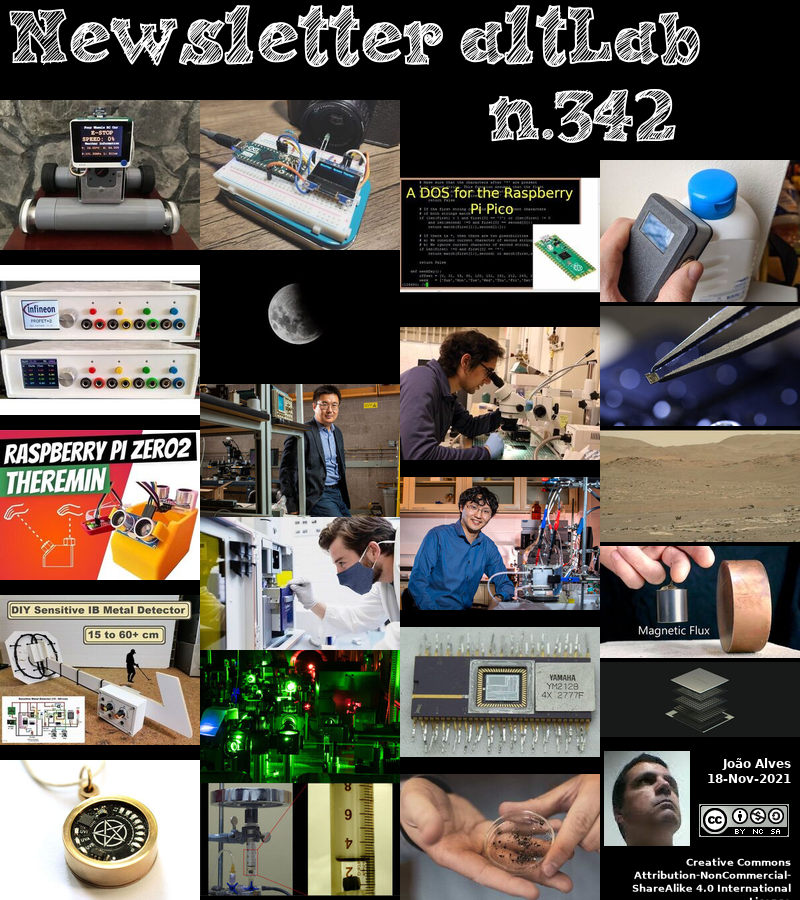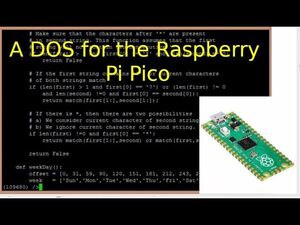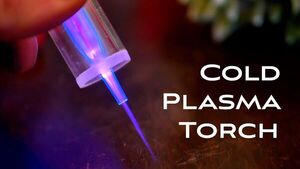2021-11-18 - Nº 342
Editorial
Esta é a Newsletter Nº 342 que se apresenta com o mesmo formato que as anteriores. Se gostar da Newsletter partilhe-a!
Todas as Newsletters encontram-se indexadas no link.
Esta Newsletter tem os seguintes tópicos:
Faz hoje anos que nascia, em 1787, o artista e inventor francês Louis Daguerre. Ele inventou o daguerreótipo, o primeiro processo prático da fotografia. Embora a primeira fotografia permanente da natureza tenha sido feita em 1826/27 por Joseph-Nicéphore Niepce de França, era de má qualidade e exigia cerca de oito horas de tempo de exposição. O processo que a Daguerre desenvolveu exigiu apenas 20 a 30 minutos. Os dois tornaram-se parceiros no desenvolvimento do processo heliográfico da Niepce desde 1829 até à morte da Niepce em 1833. Daguerre continuou as suas experiências, e descobriu que a exposição de uma placa de prata iodada numa câmara resultaria numa imagem duradoura após um processo de fixação química.
Faz também hoje anos que nascia, em 1839, o físico alemão August Kundt. Ele desenvolveu um método para determinar a velocidade do som em gases e sólidos. Ele utilizou um tubo de vidro fechado no qual foi aspergido um pó seco (como o licopódio). A fonte do som no dispositivo original era uma haste metálica presa no seu centro com um pistão numa extremidade, que é inserida no tubo. Quando a haste é acariciada, ondas sonoras geradas pelo pistão entram no tubo. Se a posição do pistão no tubo for ajustada de modo a que a coluna de gás tenha um número inteiro de meio comprimento de onda, o pó será perturbado pelas ondas estacionárias resultantes, formando uma série de estrias, permitindo a medição das distâncias entre nós.
Faz igualmente hoje anos que nascia, em 1897, o físico inglês Patrick Blackett. Ele recebeu o Prémio Nobel da Física em 1948 pelas suas descobertas no campo da radiação cósmica. Nestes estudos, utilizou fotografias de câmaras de nuvens que revelavam a forma como um núcleo atómico estável pode ser desintegrado bombardeando-o com partículas alfa (núcleos de hélio). Embora tal desintegração nuclear tivesse sido observada anteriormente, os seus dados explicaram este fenómeno pela primeira vez e foram úteis para explicar a desintegração por outros meios.
Faz também hoje anos que nascia, em 1906, o engenheiro turco-britânico Alec Issigonis. Ele foi o designer do automóvel Mini, um marco no design automóvel quando a British Motor Corporation introduziu o Morris Mini-Minor a 26 de Agosto de 1959. Tinha apenas 10 pés de comprimento, mas permitia sentar quatro passageiros, e era um dos carros com os preços mais baixos do mercado. Para poupar espaço, o motor era montado transversalmente, e tinha uma suspensão totalmente independente. Issigonis acreditava que "quando se está a conceber um carro novo para produção, nunca, nunca copie a oposição". Assim, o Mini assemelhava-se a nenhum outro carro, fornecia um veículo que transportava a maior carga útil no menor espaço prático, e incorporava novos princípios de engenharia. Continua a ter sucesso mais de cinco décadas depois porque o construiu desde o início para economia de combustível, aceleração rápida, maneabilidade e facilidade de estacionamento.
Por fim, faz hoje anos que nascia, em 1923, o astronauta norte-americano Alan Shepard. Ele foi o primeiro homem da América no espaço e um dos únicos 12 humanos que caminharam na Lua. Nomeado como um dos sete astronautas originais da nação Mercury em 1959, Shepard tornou-se o primeiro americano a entrar no espaço em 5 de Maio de 1961, a bordo de um foguete Redstone num voo suborbital de 15 minutos que o levou a ele e à sua cápsula Mercury 7 Freedom 115 milhas de altitude e 302 milhas para baixo do Cabo Canaveral, FL. (O seu voo chegou três semanas após o lançamento do cosmonauta soviético Yuri Gagarin, que em 12 de Abril de 1961, se tornou o primeiro viajante espacial humano num voo de um órbita com a duração de 108 minutos).
Hoje acontece o o mais longo eclipse lunar desde 1441. O evento irá durar cerca de 3 horas e meia e o fenómeno ocorre quando a Terra passa entre o Sol e a Lua, criando uma sombra sobre o nosso satélite natural. Apesar disso, a Lua não desaparece, mas fica sim num tom avermelhado que lhe dá o nome de "lua de sangue". O eclipse quase total será visível no lado nocturno da Terra. Poderá ser visto no céu da América do Norte, Austrália, Nova Zelândia, Japão, China, Sudeste Asiático, Havai e partes da Rússia. Alguns na quinta-feira ao final do dia e outros durante a madrugada de sexta-feira. Infelizmente, em Portugal, este fenómeno apenas poderá ser observado nos Açores.
Na Newsletter desta semana apresentamos diversas noticias, artigos científicos, projetos de maker assim como alguns videos interessantes.
 João Alves ([email protected])
João Alves ([email protected])
O conteúdo da Newsletter encontra-se sob a licença  Creative Commons Attribution-NonCommercial-ShareAlike 4.0 International License.
Creative Commons Attribution-NonCommercial-ShareAlike 4.0 International License.
Novidades da Semana

An Almost Total Lunar Eclipse
"On November 19, 2021 (late evening of the 18th in some time zones), the Moon passes into the shadow of the Earth, creating a partial lunar eclipse so deep that it can reasonably be called almost total. What is an “almost total” lunar eclipse? A lunar eclipse occurs when the Sun, Earth, and Moon align so that the Moon passes into Earth’s shadow. In a total lunar eclipse, the entire Moon falls within the darkest part of Earth’s shadow, called the umbra. In this eclipse, up to 99.1% of the Moon’s disk will be within Earth’s umbra. How can I observe the eclipse?" [...]
Outras Notícias

Nexperia introduces a range of A-selection Zener diodes for precise voltage reference with the industry’s lowest tolerance of ±1%
"Nexperia, the expert in essential semiconductors, today announced the industry’s first range of A-selection Zener diodes. With a tolerance of just ±1%, the BZT52H-A (SOD123F) and BZX384-A (SOD323) series provide a higher precision voltage reference compared to the B (±2%) and C (±5%) variants. Matching the rising demands of mobile, portable/wearable, automotive and industrial applications and meeting the increasing regulatory requirements, the two series are also available as Q-portfolio devices. “Nexperia’s A-selection Zener diode range covers every application from 1.8 V to 75 V while providing a precise voltage reference with the lowest possible tolerance,” says Paula Stümer, product manager at Nexperia. “By replacing B- or C-selection devices with pad compatible A-selection Zener devices, engineers can go to the limits of the MOSFET, if applied to limit voltage for the gate-source path or drain-gate path, or choose from a wider variety of suitable MOSFETs.” The A-selection Zener diodes have a nominal working voltage range of 1.8 V to 75 V (E24 range). The devices feature a non-repetitive peak reverse power dissipation of ≤40W, total power dissipation ≤250mW and low differential thermal resistance." [...]

Toshiba Releases Its First 200V Transistor Output Automotive Photocoupler
"Toshiba Electronic Devices & Storage Corporation ("Toshiba") has launched a high voltage transistor output automotive photocoupler, “TLX9188,” for isolated signal communication in automotive equipment, including electric mobility vehicles. Volume shipments start today. TLX9188’s high voltage photo transistor delivers a collector-emitter voltage rating of 200V, 2.5 times higher than Toshiba’s current TLX9185A, a first for the company. By specifying maximum values for switching characteristics (turn-on time, turn-off time), the new photocoupler can be used as a unidirectional switch. It can also be used in feedback circuits of analog signals in 100V to 200V equipment, helping to reduce the cost of application circuits. Applications - Automotive equipment - Battery Management Systems: voltage monitoring, mechanical relay sticking detection, ground fault detection, etc." [...]

IBM Unveils Breakthrough 127-Qubit Quantum Processor
"IBM today announced its new 127-quantum bit (qubit) 'Eagle' processor at the IBM Quantum Summit 2021, its annual event to showcase milestones in quantum hardware, software, and the growth of the quantum ecosystem. The 'Eagle' processor is a breakthrough in tapping into the massive computing potential of devices based on quantum physics. It heralds the point in hardware development where quantum circuits cannot be reliably simulated exactly on a classical computer. IBM also previewed plans for IBM Quantum System Two, the next generation of quantum systems. Quantum computing taps into the fundamental quantum nature of matter at subatomic levels to offer the possibility of vastly increased computing power. The fundamental computational unit of quantum computing is the quantum circuit, an arrangement of qubits into quantum gates and measurements." [...]

Texas Instruments to begin construction next year on new 300-mm semiconductor wafer fabrication plants
"Texas Instruments Incorporated (TI) (Nasdaq: TXN) today announced plans to begin construction next year on its new 300-millimeter semiconductor wafer fabrication plants (or "fabs") in Sherman, Texas. The North Texas site has the potential for up to four fabs to meet demand over time, as semiconductor growth in electronics, particularly in industrial and automotive markets, is expected to continue well into the future. Construction of the first and second fabs is set to begin in 2022. "TI’s future analog and embedded processing 300-mm fabs at the Sherman site are part of our long-term capacity planning to continue to strengthen our manufacturing and technology competitive advantage and support our customers’ demand in the coming decades," said Rich Templeton, TI’s chairman, president and CEO. "Our commitment to North Texas spans more than 90 years, and this decision is a testament to our strong partnership and investment in the Sherman community." Production from the first new fab is expected as early as 2025." [...]

STMicroelectronics Upgrades Automotive Positioning Accuracy with Single-Chip Triple-Band Satellite-Navigation Receiver
"STMicroelectronics (NYSE: STM), a global semiconductor leader serving customers across the spectrum of electronics applications, has introduced a world-first automotive satellite-navigation chip that delivers high-quality position data needed by advanced driving systems. Joining ST’s Teseo V family, the STA8135GA is the first automotive-qualified GNSS (Global Navigation Satellite System) receiver to integrate a triple-band positioning measurement engine on-chip, in addition to standard multi-band Position-Velocity-Time (PVT) and dead-reckoning. Triple band has historically been used in professional applications such as surveying, mapping, and precision agriculture that demand millimeter accuracy with minimal reliance on correction data. Until now only available in chipsets or modules, which are typically larger and more expensive than ST’s single-chip solution, triple-band enables the receiver to efficiently acquire and track the largest number of satellites in multiple constellations simultaneously for superior performance in difficult conditions such as in urban canyons and under tree cover. Bringing this capability to the automotive market in a compact and convenient package, the STA8135GA helps driver-assistance systems make accurate decisions about the road ahead. The multi-constellation receiver delivers raw information for the host system to run any precise-positioning algorithm, such as PPP/RTK (Precise Point Positioning / Real-Time Kinematic)." [...]

Xilinx Launches Alveo U55C, Its Most Powerful Accelerator Card Ever, Purpose-Built for HPC and Big Data Workloads
"Xilinx, Inc. (NASDAQ: XLNX), the leader in adaptive computing, today at the SC21 supercomputing conference introduced the Alveo™ U55C data center accelerator card and a new standards-based, API-driven clustering solution for deploying FPGAs at massive scale. The Alveo U55C accelerator brings superior performance-per-watt to high performance computing (HPC) and database workloads and easily scales through the Xilinx® HPC clustering solution. Purpose-built for HPC and big data workloads, the new Alveo U55C card is the company’s most powerful Alveo accelerator card ever, offering the highest compute density and HBM capacity in the Alveo accelerator portfolio. Together with the new Xilinx RoCE v2-based clustering solution, a broad spectrum of customers with large-scale compute workloads can now implement powerful FPGA-based HPC clustering using their existing data center infrastructure and network. “Scaling out Alveo compute capabilities to target HPC workloads is now easier, more efficient and more powerful than ever,” said Salil Raje, executive vice president and general manager, Data Center Group at Xilinx. “Architecturally, FPGA-based accelerators like Alveo cards provide the highest performance at the lowest cost for many compute-intensive workloads." [...]

Renesas Enters FPGA Market with the First Ultra-Low-Power, Low-Cost Family Addressing Low-Density, High-Volume Applications
"Renesas Electronics Corporation (TSE:6723), a premier supplier of advanced semiconductor solutions, today announced that it is entering the Field-Programmable Gate Array (FPGA) market with a new line of very low-cost, very low-power devices. The ForgeFPGA™ Family will address the underserved market need for relatively small amounts of programmable logic that can be quickly and efficiently designed into cost-sensitive applications. The ForgeFPGA devices will provide dramatic cost savings versus other alternatives, including non-FPGA designs. By providing a high level of integration, they reduce overall board and system costs. Their projected price in volume of well under US$ 0.50, opens up applications that previously couldn’t use FPGAs due to cost constraints, including high-volume consumer and IoT applications. The ForgeFPGA Family will serve applications that require less than 5,000 gates of logic, with initial device sizes of 1K and 2K Look Up Tables (LUTs)." [...]
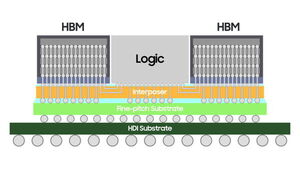
Samsung Announces Availability of Its Leading-Edge 2.5D Integration ‘H-Cube’ Solution for High Performance Applications
"'H-Cube' applies advanced silicon interposer technology and hybrid-substrate structure, allowing efficient integration of 6 HBMs, as well as lower cost benefit Samsung Electronics, a world leader in advanced semiconductor technology, today announced that it has developed Hybrid-Substrate Cube (H-Cube) technology, its latest 2.5D packaging solution specialized for semiconductors for HPC, AI, data center and network products that require high-performance and large-area packaging technology. “H-Cube solution, which is jointly developed with Samsung Electro-Mechanics (SEMCO) and Amkor Technology, is suited to high-performance semiconductors that need to integrate a large number of silicon dies,” said Moonsoo Kang, Senior Vice President and Head of Foundry Market Strategy Team at Samsung Electronics. “By expanding and enriching the foundry ecosystem, we will provide various package solutions to find a breakthrough in the challenges our customers are facing.” “In today’s environment where system integration is increasingly required and substrate supplies are constrained, Samsung Foundry and Amkor Technology have successfully co-developed H-Cube to overcome these challenges,” said JinYoung Kim, Senior Vice President of Global R&D Center at Amkor Technology. “This development lowers barriers to entry in the HPC/AI market and demonstrates successful collaboration and partnership between the foundry and outsourced semiconductor assembly and test (OSAT) company.” H-Cube Structure and Features 2.5D packaging enables logic chips or high-bandwidth memory (HBM) to be placed on top of a silicon interposer in a small form factor. Samsung’s H-Cube technology features a hybrid substrate combined with a fine-pitch substrate which is capable of fine bump connection, and a High-Density Interconnection (HDI) substrate, to implement large sizes into 2.5D packaging. With the recent increase in specifications required in the HPC, AI and networking application market segments, large-area packaging is becoming important as the number and size of chips mounted in one package increases or high-bandwidth communication is required." [...]

Analog Devices’ Battery Management IC Delivers Longer Battery Runtime
" Analog Devices, Inc. (ADI) today announced the MAX17330 battery management integrated circuit (IC) with integrated fuel gauge and advanced battery protection for one-cell lithium-ion/polymer batteries that delivers longer battery runtime for consumer applications than similar products. The new IC expands ADI’s battery management portfolio, which already delivers accuracy for the automotive and industrial markets that is among the highest in the industry. Compared with similar products, the MAX17330 significantly extends run-time and monitors internal cell self-discharge hazards, while also shrinking solution size of single cell battery-powered products. ADI’s proprietary AccuCharge™ and ModelGauge™ technologies deliver high top-off charge and deep safe discharge, enabling longer run-time of medical and fitness wearables, home and building automation sensors, handheld computers and terminals. The MAX17330 also simplifies battery management for devices using parallel cells, such as foldable smartphones and tablets, as well as AR/VR smartglasses. Conventional battery charger ICs implement techniques that result in inconsistent charging and consequently, requiring an additional margin for the battery protector." [...]

Rocket Lab launches 2 satellites to orbit, recovers Electron booster
"Rocket Lab successfully launched two satellites into orbit and recovered the mission's booster, taking another step in its quest to build a partially reusable launch vehicle. The company's two-stage Electron rocket topped with two commercial Earth-observation satellites lifted off from Rocket Lab's New Zealand site, on the North Island's Mahia Peninsula, Wednesday (Nov. 17) at 8:38 p.m. EST (0138 GMT and 2:38 p.m. New Zealand time on Nov. 18). The Electron's first stage splashed down softly under parachute about 18 minutes later in the Pacific Ocean a few hundred miles off the New Zealand coast, where a Rocket Lab recovery boat was waiting to fish it out of the sea and a helicopter flew overhead to spot it from the air. "Splash down of the stage confirmed," Rocket Lab CEO Peter Beck wrote on Twitter after the launch. "Helicopter has eyes on it." The Electron's upper stage, meanwhile, continued powering its way to orbit, successfully deploying two satellites for the company BlackSky 55 minutes after liftoff at an altitude of 270 miles (430 kilometers)." [...]

NASA’s Perseverance Captures Challenging Flight by Mars Helicopter
"Recently downlinked imagery of a September flight has allowed the rover imaging team to put together a video of rotorcraft performing to near-perfection. Video footage from NASA’s Perseverance Mars rover of the Ingenuity Mars Helicopter’s 13th flight on Sept. 4 provides the most detailed look yet of the rotorcraft in action. Ingenuity is currently prepping for its 16th flight, scheduled to take place no earlier than Saturday, Nov. 20, but the 160.5-second Flight 13 stands out as one of Ingenuity’s most complicated. It involved flying into varied terrain within the “Séítah” geological feature and taking images of an outcrop from multiple angles for the rover team. Acquired from an altitude of 26 feet (8 meters), the images complement those collected during Flight 12, providing valuable insight for Perseverance scientists and rover drivers. Captured by the rover’s two-camera Mastcam-Z, one video clip of Flight 13 shows a majority of the 4-pound (1.8-kilogram) rotorcraft’s flight profile." [...]
Ciência e Tecnologia
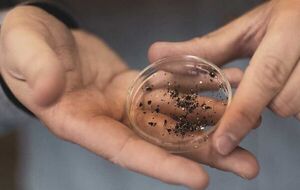
How to find new quantum materials
"What if electricity could be transported without loss or if high performance quantum computers could be realized? Such future technologies require new materials with new properties. Professor Dr. Fabian von Rohr is working with his group at the University of Zurich to discover them by combining chemical and physical methods to create a holistic and thus interdisciplinary design concept. For his research, he will receive the Ruzicka Prize 2021. Why quantum materials? Fabian von Rohr thinks about it briefly, while glancing at the flashing microphone at the table." [...]

New Technique Improves Conversion of Carbon Dioxide Into Liquid Fuels
"A copper surface coated with layered thin films helps to create useful chemicals from a polluting greenhouse gas Carbon dioxide (CO2), a product of burning fossil fuels and the most prevalent greenhouse gas, has the potential to be sustainably converted back into useful fuels. A promising route for turning CO2 emissions into a fuel feedstock is a process known as electrochemical reduction. But to be commercially viable, the process needs to be improved, to select for, or to yield, a higher amount of desirable carbon-rich products. Now, as reported in the journal Nature Energy, researchers at Lawrence Berkeley National Laboratory (Berkeley Lab) have improved the process’s selectivity by developing a new approach to modify the surface of the copper catalysts used to assist the reaction. “Although we know copper is the best catalyst for this reaction, it doesn’t give high selectivity to the desired products,” said Alexis Bell, a faculty senior scientist in Berkeley Lab’s Chemical Sciences Division and professor of chemical engineering at UC Berkeley. “Our group has found that you can do various tricks with the local environment of the catalyst to provide that selectivity.” In previous studies, the researchers had established the precise conditions that gave the best electrical and chemical environment for creating commercially interesting carbon-rich products." [...]
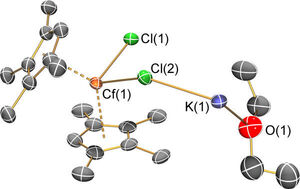
Exotic element, californium, explored in detail
"Challenging study revealed structure, bonding trends and reactivity New work led by Los Alamos National Laboratory, in the journal Nature this week, reports the first structural characterization of californium-carbon bonding in a molecule. Such analysis allows scientists to assess periodic reactivity and bonding trends in an otherwise mysterious element. “Californium captures the imagination and offers broad science appeal because of its exotic place in the periodic table,” said Andrew Gaunt, a Los Alamos chemist and one of the paper’s lead authors. “Due to the scarcity of well-characterized molecules, we are testing and expanding the known limits of chemical bonding and electronic structure for an element that has largely eluded definition.” He added, “Organometallic molecules have proven foundational in understanding the chemical properties of many metals. Conducting organometallic studies to californium allows an unprecedented comparison to earlier, more accessible actinide chemistry such as with thorium and uranium, and heavy lanthanide analogues. Via these side-to-side comparisons we can begin to assess periodic reactivity and bonding trends that have sat frustratingly out of reach for decades.” Californium is the heaviest element that, although very scarce, is available on a milligram scale, just large enough to conduct classical synthetic chemistry – that is, to isolate molecules in pure single-crystal form, determine their structures (how atoms in a molecule are arranged in space and connected to each other), and acquire spectroscopic data that, coupled to quantum mechanical calculations, informs about the distribution and properties of electrons in the molecules." [...]

Pushing the limits of electronic circuits
"Ruonan Han seeks to develop next-generation electronic devices by harnessing terahertz waves. Ruonan Han’s research is driving up the speeds of microelectronic circuits to enable new applications in communications, sensing, and security. Han, an associate professor who recently earned tenured in MIT’s Department of Electrical Engineering and Computer Science, focuses on producing semiconductors that operate efficiently at very high frequencies in an effort to bridge what is known as the “terahertz gap.” The terahertz region of the electromagnetic spectrum, which lies between microwaves and infrared light, has largely eluded researchers because conventional electronic devices are too slow to manipulate terahertz waves. “Traditionally, terahertz has been unexplored territory for researchers simply because, frequency-wise, it is too high for the electronics people and too low for the photonics people,” he says. “We have a lot of limitations in the materials and speeds of devices that can reach those frequencies, but once you get there, a lot of amazing things happen.” For instance, terahertz frequency waves can move through solid surfaces and generate very precise, high-resolution images of what is inside, Han says. Radio frequency (RF) waves can travel through surfaces, too — that’s the reason your Wi-Fi router can be in a different room than your computer." [...]

Tiny chip provides a big boost in precision optics
"Researchers at University of Rochester’s Institute of Optics for first time distill novel interferometry into a photonic device. By merging two or more sources of light, interferometers create interference patterns that can provide remarkably detailed information about everything they illuminate, from a tiny flaw on a mirror, to the dispersion of pollutants in the atmosphere, to gravitational patterns in far reaches of the Universe. “If you want to measure something with very high precision, you almost always use an optical interferometer, because light makes for a very precise ruler,” says Jaime Cardenas, assistant professor of optics at the University of Rochester. Now, the Cardenas Lab has created a way to make these optical workhorses even more useful and sensitive. Meiting Song, a PhD student, has for the first time packaged an experimental way of amplifying interferometric signals—without a corresponding increase in extraneous, unwanted input, or “noise”—on a 2 mm by 2 mm integrated photonic chip. The breakthrough, described in Nature Communications, is based on a theory of weak value amplification with waveguides that was developed by Andrew Jordan, a professor of physics at Rochester, and students in his lab." [...]

Theoretical breakthrough could boost data storage
"New work on linear-probing hash tables from MIT CSAIL could lead to more efficient data storage and retrieval in computers. A trio of researchers that includes William Kuszmaul — a computer science PhD student at MIT — has made a discovery that could lead to more efficient data storage and retrieval in computers. The team’s findings relate to so-called “linear-probing hash tables,” which were introduced in 1954 and are among the oldest, simplest, and fastest data structures available today. Data structures provide ways of organizing and storing data in computers, with hash tables being one of the most commonly utilized approaches. In a linear-probing hash table, the positions in which information can be stored lie along a linear array. Suppose, for instance, that a database is designed to store the Social Security numbers of 10,000 people, Kuszmaul suggests." [...]

Software-Defined Car: Foundations for Future Vehicle Generations
"Some of today’s vehicles already feature more than 100 control units. This high complexity of electrical and electronic systems and their architecture will further increase, but must remain manageable. The “Software-Defined Car” (SofDCar) project, in which Karlsruhe Institute of Technology (KIT) is involved together with the University of Stuttgart, the Research Institute of Automotive Engineering and Vehicle Engines Stuttgart (FKSF), and the FZI Research Center for Information Technology, an innovation partner of KIT, now aims to develop standardized rules and processes to ensure that electronic components of the vehicle interact smoothly, remain updatable and, hence, safe. The aim of the “SofDCar” project is to establish rules and processes for controlling all software updates and upgrades in the future, as well as a consistent functional and IT security methodology to which they should adhere. This will prevent individual programs from interfering with each other and ensure their proper functioning within the system without any errors. This will be the prerequisite for the accelerated development of new functions and their safe use by drivers." [...]
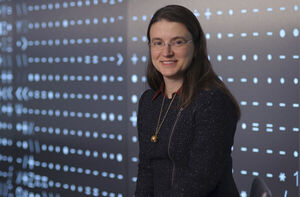
Electrochemistry, from batteries to brains
"Professor Bilge Yildiz finds patterns in the behavior of ions across applications. Bilge Yildiz’s research impacts a wide range of technologies. The members of her lab study fuel cells, which convert hydrogen and oxygen into electricity (and water). They study electrolyzers, which go the other way, using electricity to convert water into hydrogen and oxygen. They study batteries. They study corrosion." [...]

Magnetene’s ultra-low friction explained
"Rice lab aids study of 2D material to lubricate implants, other microscale systems Rice University materials scientists have helped colleagues at the University of Toronto make the first measurements of ultra-low friction in magnetene, a 2D material derived from magnetite. The collaborators have discovered the material derives its slippery properties from the quantum effects that exist along its surface. The result, which appears in Science Advances, points the way toward the design of similar low-friction materials for use in a variety of fields, including small implantable devices. The Rice lab of materials scientist Pulickel Ajayan, a co-corresponding author of the paper, provided magnetene to the Toronto group by directing high-frequency sound waves at bulk magnetite, a form of iron oxide. This gently separated layers consisting of only a few sheets of magnetene. The Ajayan lab first reported its liquid exfoliation isolation of magnetene, as well as its quantum confinement-induced magnetic properties, in October 2020 in the journal Small." [...]
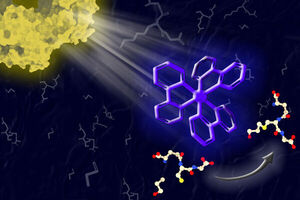
This light-powered catalyst mimics photosynthesis
"The new molecule can improve the yield of reactions for generating pharmaceuticals and other useful compounds. By mimicking photosynthesis, the light-driven process that plants use to produce sugars, MIT researchers have designed a new type of photocatalyst that can absorb light and use it to drive a variety of chemical reactions. The new type of catalyst, known as a biohybrid photocatalyst, contains a light-harvesting protein that absorbs light and transfers the energy to a metal-containing catalyst. This catalyst then uses the energy to perform reactions that could be useful for synthesizing pharmaceuticals or converting waste products into biofuels or other useful compounds. “By replacing harmful conditions and reagents with light, photocatalysis can make pharmaceutical, agrochemical, and fuel synthesis more efficient and environmentally compatible,” says Gabriela Schlau-Cohen, an associate professor of chemistry at MIT and the senior author of the new study. Working with colleagues at Princeton University and North Carolina State University, the researchers showed that the new photocatalyst could significantly boost the yield of the chemical reactions they tried." [...]
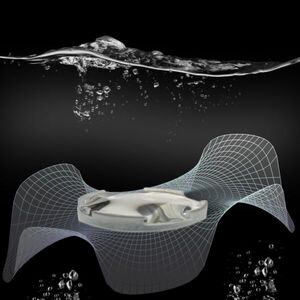
Researchers Fabricate Complex Optical Components from Fluids
"Researchers have developed a way to create freeform optical components by shaping a volume of curable liquid polymer. The new method is poised to enable faster prototyping of customized optical components for a variety of applications including corrective lenses, augmented and virtual reality, autonomous vehicles, medical imaging and astronomy. Common devices such as eyeglasses or cameras rely on lenses – optical components with spherical or cylindrical surfaces, or slight deviations from such shapes. However, more advanced optical functionalities can be obtained from surfaces with complex topographies. Currently, fabricating such freeform optics is very difficult and expensive because of the specialized equipment required to mechanically process and polish their surfaces. “Our approach to making freeform optics achieves extremely smooth surfaces and can be implemented using basic equipment that can be found in most labs,” said research team leader Moran Bercovici from the Technion – Israel Institute of Technology." [...]
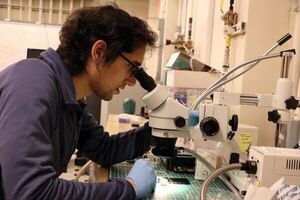
New material could be two superconductors in one
"Work has potential applications in quantum computing, and introduces new way to plumb the secrets of superconductivity. MIT physicists and colleagues have demonstrated an exotic form of superconductivity in a new material the team synthesized only about a year ago. Although predicted in the 1960s, until now this type of superconductivity has proven difficult to stabilize. Further, the scientists found that the same material can potentially be manipulated to exhibit yet another, equally exotic form of superconductivity. The work was reported in the Nov. 3 issue of the journal Nature. The demonstration of finite momentum superconductivity in a layered crystal known a natural superlattice means that the material can be tweaked to create different patterns of superconductivity within the same sample." [...]
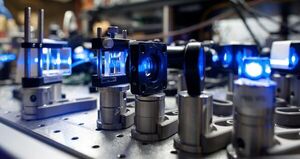
Energizer Atoms: JILA Researchers Find New Way to Keep Atoms Excited
"JILA researchers have tricked nature by tuning a dense quantum gas of atoms to make a congested “Fermi sea,” thus keeping atoms in a high-energy state, or excited, for about 10% longer than usual by delaying their normal return to the lowest-energy state. The technique might be used to improve quantum communication networks and atomic clocks. Quantum systems such as atoms that are excited above their resting state naturally calm down, or decay, by releasing light in quantized portions called photons. This common process is evident in the glow of fireflies and emission from LEDs. The rate of decay can be engineered by modifying the environment or the internal properties of the atoms. Previous research has modified the electromagnetic environment; the new work focuses on the atoms." [...]
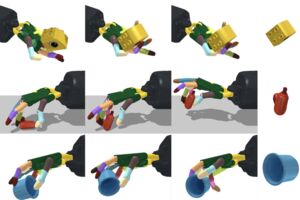
Dexterous robotic hands manipulate thousands of objects with ease
"Model-free framework reorients over 2,000 diverse objects with a hand facing both upward and downward, in a step toward more human-like manipulation. At just one year old, a baby is more dexterous than a robot. Sure, machines can do more than just pick up and put down objects, but we’re not quite there as far as replicating a natural pull toward exploratory or sophisticated dexterous manipulation goes. Artificial intelligence firm OpenAI gave it a try with Dactyl (meaning “finger,” from the Greek word “daktylos”), using their humanoid robot hand to solve a Rubik’s cube with software that’s a step toward more general AI, and a step away from the common single-task mentality. DeepMind created “RGB-Stacking,” a vision-based system that challenges a robot to learn how to grab items and stack them. Scientists from MIT’s Computer Science and Artificial Intelligence Laboratory (CSAIL), in the ever-present quest to get machines to replicate human abilities, created a framework that’s more scaled up: a system that can reorient over 2,000 different objects, with the robotic hand facing both upwards and downwards." [...]

This new startup has built a record-breaking 256-qubit quantum computer
"QuEra Computing, launched by physicists at Harvard and MIT, is trying a different quantum approach to tackle impossibly hard computational tasks. At long last, physicists from Harvard and MIT have found the killer application for quantum computing: a Mario Bros. GIF made from qubits. The qubits (quantum bits) can also be arranged in a Space Invaders design, or Tetris, or any other shape—your geometrical wish is the qubits’ command. The GIFs are from QuEra Computing, a Boston startup emerging from stealth, to show off the programmability of their 256-qubit quantum simulator—a special-purpose quantum computer built for solving certain types of problems. The QuEra machine is the latest leap in scaling up quantum computing to make it more powerful and capable of tackling practical problems. More qubits mean more information can be stored and processed, and researchers developing the technology have been racing to continually raise the bar." [...]

Canadian researchers achieve first quantum simulation of baryons
"A team of researchers led by Professor Christine Muschik from Physics and Astronomy performed the first-ever simulation of baryons—fundamental quantum particles—on a quantum computer. With their results, the team has taken a step towards more complex quantum simulations that will allow scientists to study neutron stars, learn more about the earliest moments of the universe, and realize the revolutionary potential of quantum computers. “This is an important step forward – it is the first simulation of baryons on a quantum computer ever,” said Muschik, also a member of the Institute for Quantum Computing (IQC). “Instead of smashing particles in an accelerator, a quantum computer may one day allow us to simulate these interactions that we use to study the origins of the universe and so much more.” Muschik leads the Quantum Interactions Group, which studies the quantum simulation of lattice gauge theories. These theories are descriptions of the physics of reality, including the Standard Model of particle physics. The more inclusive a gauge theory is of fields, forces, particles, spatial dimensions and other parameters, the more complex it is—and the more difficult it is for a classical supercomputer to model." [...]
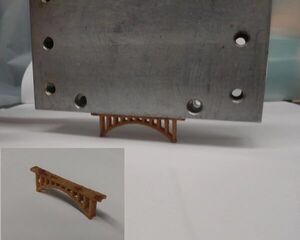
Polymer discovery gives 3D-printed sand super strength
"Researchers at the Department of Energy’s Oak Ridge National Laboratory designed a novel polymer to bind and strengthen silica sand for binder jet additive manufacturing, a 3D-printing method used by industries for prototyping and part production. The printable polymer enables sand structures with intricate geometries and exceptional strength – and is also water soluble. The study, published in Nature Communications, demonstrates a 3D-printed sand bridge that at 6.5 centimeters can hold 300 times its own weight, a feat analogous to 12 Empire State Buildings sitting on the Brooklyn Bridge. The binder jet printing process is cheaper and faster than other 3D-printing methods used by industry and makes it possible to create 3D structures from a variety of powdered materials, offering advantages in cost and scalability. The concept stems from inkjet printing, but instead of using ink, the printer head jets out a liquid polymer to bind a powdered material, such as sand, building up a 3D design layer by layer. The binding polymer is what gives the printed sand its strength." [...]
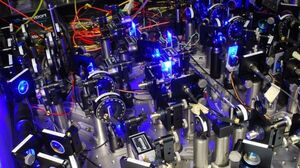
Laser cooling for quantum gases
"What does it mean when we say that something is extremely cold? A physicist’s answer would be: this means that atoms and molecules barely move. For several decades now, physicists have been developing techniques to create such ultracold states of matter, using lasers to bring gases into the regime where quantum mechanics reigns. In a new ‘Insight’ issue of Nature Physics, UvA-physicists describe the developments in this nearly motionless yet very exciting world. Slowing down an atom or a molecule so that it becomes part of an extremely cold substance is not straightforward. One cannot simply grab individual moving particles and force them to hold still." [...]
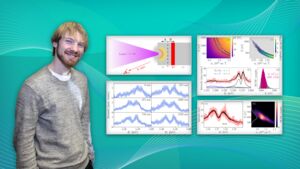
PPPL scientists create insights into perhaps the most extreme state of matter produced on Earth
"Exotic laser-produced high-energy-density (HED) plasmas akin to those found in stars and nuclear explosions could provide insight into events throughout the universe. Physicists at the U.S. Department of Energy’s (DOE) Princeton Plasma Physics Laboratory (PPPL) have discovered a new way to measure and understand these plasmas, among the most extreme states of matter ever produced on Earth. Improved understanding could provide benefits ranging from fine-tuning the high-density plasmas in inertial confinement fusion experiments to better understanding of processes throughout the universe. A billion times denser HED plasmas are a billion times denser than those that fuel fusion reactions in tokamaks, doughnut-shaped magnetic fusion facilities such as the National Spherical Torus Experiment-Upgrade (NSTX-U) at PPPL. “Everything functions very differently in HED plasmas,” said PPPL physicist Brian Kraus, lead author of a paper in Physical Review Letters that describe the measurement techniques. “We need to better understand how physics works at these very high densities, but clarifying measurements have been difficult up until now.” Plasma comprises 99 percent of the visible universe and consists of free-floating electrons and atomic nuclei, or ions." [...]
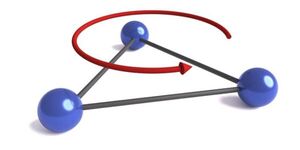
Physicists reveal non-reciprocal flow around the quantum world
"Physicists from Exeter and Zaragoza have created a theory describing how non-reciprocity can be induced at the quantum level, paving the way for non-reciprocal transport in the next generation of nanotechnology A pair of theoretical physicists, from the University of Exeter (United Kingdom) and the University of Zaragoza (Spain), have developed a quantum theory explaining how to engineer non-reciprocal flows of quantum light and matter. The research may be important for the creation of quantum technologies which require the directional transfer of energy and information at small scales. Reciprocity, going the same way backward as forward, is a ubiquitous concept in physics. A famous example may be found in Newton’s Law: for every action there is an equal and opposite reaction. The breakdown of such a powerful notion as reciprocity in any area of physics, from mechanics to optics to electromagnetism, is typically associated with surprises which can be exploited for technological application. For example, a nonreciprocal electric diode allows current to pass in forwards but not backwards and forms a building block of the microelectronics industry." [...]

Modifying molecules is complicated—so UChicago chemists found a simpler way
"New carbonyl rearrangement method could help identify new medicines, chemicals Rearranging the parts of a molecule is like rearranging the contents of a tightly packed suitcase: You must go through a number of steps, taking objects in and out to get the configuration you want. A new study by University of Chicago chemists, however, offers a more efficient way to let researchers rearrange the components of a molecule—in particular, a key component called carbonyl groups that appears in many pharmaceutical drugs and other useful chemicals. “This method really simplifies the modification of an important functional group in organic chemistry,” said Zhao Wu, a postdoctoral researcher and first author of the paper, published Nov. 5 in the journal Science. Carbonyl groups consist of a carbon atom double-bonded to an oxygen atom. These components appear in many useful molecules, including pharmaceutical drugs, and researchers would like to test them in many different configurations to find which is best. “The location of the group on the molecule is really important for biological activity,” said Prof. Guangbin Dong, the study’s corresponding author." [...]

The first biodegradable version of Velcro has been created to safeguard the environment
"The research project published in Communications Materials has also led to the filing of a patent The research group coordinated by Barbara Mazzolai at the IIT – Istituto Italiano di Tecnologia (Italian Institute of Technology) has created the first ever prototype of a soft, biodegradable and soluble Velcro inspired by the micro-hook structure of leaves on the “catchweed” plant (Galium aparine), for use in devices for the monitoring and safeguarding of the environment and in precision farming. The project, published in the international journal Communications Materials, shows how the artificial micro-hooks can be applied to a series of devices that, when attached to plant leaves, act as a kind of temporary plaster, releasing beneficial substances into the plant’s vascular system, or as intelligent clips that wirelessly communicate information on the health status of crop plants. The research has been funded with the support of the National Geographic Society, and as part of the European GrowBot project dedicated to the creation of new robots inspired by climbing plants and for which Mazzolai is coordinator. The climbing plant Galium aparine, commonly known as “catchweed”, has evolved a particular mechanism for parasitic anchoring that allows it to climb over other plants via micro-hooks on its leaves. These hooks allow it to anchor onto the surfaces of other plants as it grows, exploiting them for physical support. The researchers at IIT studied the structure of these natural micro-hooks from both a morphological and biomechanical point of view in order to artificially reproduce their characteristics." [...]
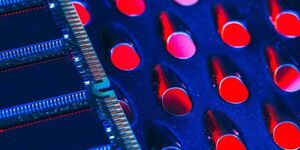
Serious security vulnerabilities in computer memories
"Researchers at ETH Zurich have discovered major vulnerabilities in DRAM memory devices, which are widely used in computers, tablets and smartphones. The vulnerabilities have now been published together with the National Cyber Security Centre, which for the first time has assigned an identification number for it. When browsing the internet on a laptop computer or writing messages on a smartphone, we all like to think that we are reasonably safe from hacker attacks as long as we have installed the latest software updates and anti-virus software. But what if the problem lies not with the software, but with the hardware? A team of researchers led by Kaveh Razavi at ETH Zurich, together with colleagues at the Vrije Universiteit Amsterdam and Qualcomm Technologies, have recently discovered fundamental vulnerabilities affecting the memory component called DRAM at the heart of all modern computer systems. The results of their research have now been accepted for publication at a flagship IT security conference, and the Swiss National Cyber Security Centre (NCSC) has issued a Common Vulnerabilities and Exposures (CVE) number." [...]
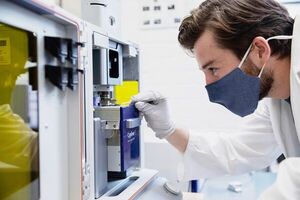
Graphene-like 2D material leverages quantum effects to achieve ultra-low friction
"A team of researchers from U of T Engineering and Rice University have reported the first measurements of the ultra-low-friction behaviour of a material known as magnetene. The results point the way toward strategies for designing similar low-friction materials for use in a variety of fields, including tiny, implantable devices. Magnetene is a 2D material, meaning it is composed of a single layer of atoms. In this respect, it is similar to graphene, a material that has been studied intensively for its unusual properties — including ultra-low friction — since its discovery in 2004. “Most 2D materials are formed as flat sheets,” says Peter Serles (MIE PhD candidate), who is the lead author of the new paper published today in Science Advances. “The theory was that these sheets of graphene exhibit low friction behaviour because they are only very weakly bonded, and slide past each other really easily." [...]

Bismuth isotopes also alternate from spheres to rugby balls
"The unusual nuclear physics phenomenon, first discovered at CERN’s ISOLDE facility 50 years ago, had until now been seen only in mercury isotopes. Alternating from spheres to rugby balls is no longer the sole preserve of mercury isotopes, an international team at CERN’s ISOLDE facility reports in a paper published in Physical Review Letters. Isotopes are forms of a chemical element that have the same number of protons in their atomic nuclei but a different number of neutrons. Atomic nuclei are usually spherical or nearly spherical. For a given element, though, when the number of neutrons changes, a gradual change in nuclear shape, or even a sudden one, can occur. However, 50 years ago, an experiment at ISOLDE revealed that the nuclei of mercury isotopes actually alternate dramatically in shape, from a sphere to a pronounced rugby ball, as single neutrons are removed from, or added to, the nucleus." [...]
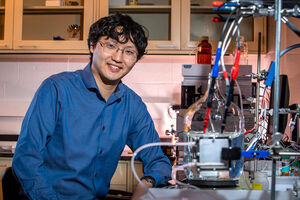
Sustainable electrochemical process could revolutionize lithium-ion battery recycling
"Spent lithium-ion batteries contain valuable metals that are difficult to separate from each other for recycling purposes. Used batteries present a sustainable source of these metals, especially cobalt and nickel, but the current methods used for their separation have environmental and efficiency drawbacks. A new technology uses electrochemistry to efficiently separate and recover the metals, making spent batteries a highly sustainable secondary source of cobalt and nickel – the reserves of which are currently dwindling. A new study, led by University of Illinois Urbana-Champaign chemical and biomolecular engineering professor Xiao Su, uses selective electrodeposition to recover valuable metals from commercially sourced lithium nickel manganese cobalt oxide – or NMC – battery electrodes. The method, published in the journal Nature Communications, produces final product purities of approximately 96.4% and 94.1% for cobalt and nickel, respectively, from spent NMC electrode wastes. Su said cobalt and nickel have similar electrochemical properties – or standard reduction potentials – making it challenging for chemists to recover pure forms of each metal from battery electrodes." [...]
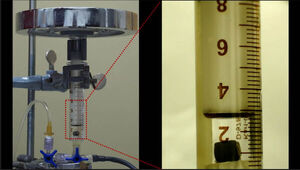
Airy material with explosive power
"International research team led by Kiel develops a new method for the generation of controllable electrical explosions. Theoretically, it only takes less than 450 grams of this material to lift an elephant: "Aerographene" owes this ability to its unique structure at the nano level. Visually similar to a black foam, it actually consists of a finely-structured tubular network based on graphene with numerous cavities. This makes it extremely stable, conductive and almost as lightweight as air. An international research team led by materials scientists from Kiel University (CAU) has now taken a major step toward practical applications. They have succeeded in repeatedly heating and cooling aerograph and the air contained inside to very high temperatures in an extremely short period of time." [...]
Projetos Maker
Diversos Projetos interessantes.

DIY Simple Sensitive IB Metal Detector with 2xNE555 IC
"A relatively sensitive IB (Induction balance) Metal Detector which is very easy to make, and contains a few standard electronic components In the previous period, I presented several types of metal detectors that were based on microcontrollers and Android smartphone. This time I will present you a relatively sensitive IB (Induction balance) Metal Detector which is very easy to make, and contains only a few standard electronic components. The project is based on "Matchless metal locator" Metal detector by Thomas Scarborough published in Silicon Chip Magazine in 2012. First I made the original project which has relatively good features and then I modified it by adding a Power Mosfet in front of the Tx coil. This modification gives about 30% better sensitivity, but the most important thing is that the stability is drastically increased, so now there is no need to frequently adjust the operating point of the device. But I must point out that the downside is that consumption has increased several times and now is around 50 milliamperes, but since I use large capacity lithium-ion batteries, this is not a problem." [...]

UV Protection Amulet
"The UV Protection Amulet is a magical pendant that warns you about ultraviolet radiation. To experience the thought process behind the conception, design and manufacture of these amulets, or simply to enjoy a mesmerizing micro metalworking montage, watch the following YouTube video – over 52 minutes of the highest quality content. Ordinarily my videos only summarize the content while the technical details are expounded upon more extensively on these pages, but since the vast majority of my audience don't even read this shit I'm mixing up the formula today and presenting the following bonus items. " [...]
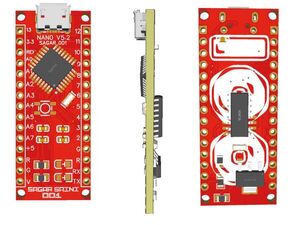
How to make Arduino Uno clone board
"This is Arduino Uno compatible board having micro usb for power and ch340g for programming. Lightweight and powerful. Hello guys, in this tutorial we will discuss about Arduino circuit and share its Gerber files and bootloader info with you. We will construct the circuit using EasyEDA. Then we will convert the schematics into Gerber file. " [...]

The Local Weather Station on a Four-Wheels Bluetooth Controlled Car
"Hello!!! This is my four-wheels bluetooth controlled car which is equipped a local weather station on it. This four wheels car can be fully functional bluetooth controlled via Blynk that allows the car to move forward, backward, turn left, turn right by four DC motors. And it can also measure the weather data on my surrounding such as: air pressure, temperature, humidity, light. It is controlled by Seeed Wio Terminal &DFRobot Quad DC Motor Driver Shield. And all data related to car and weather are shown on both Wio Terminal LCD and Blynk HMI screen." [...]

Reverse-engineering the Yamaha DX7 synthesizer's sound chip from die photos
"The Yamaha DX7 digital synthesizer was released in 1983 and became "one of the most important advances in the history of modern popular music"1. It defined the sound of 1980s pop music, used by bands from A-ha and Michael Jackson to Dolly Parton and Whitney Houston. The DX7's electric piano sound can be heard in over 40% of 1986's top hits.2 Compared to earlier synthesizers, the DX7 was compact, inexpensive, easy to use, and provided a new soundscape.3 While digital synthesis is straightforward nowadays, microprocessors4 weren't fast enough to do this in the early 1980s. Instead, the DX7 used two custom chips: the YM21290 EGS "envelope" chip generated frequency and envelope data, which it fed to the YM212805 OPS "operator" chip that generated the sound waveforms. In this blog post, I investigate the operator chip and how it digitally produced sounds using a technique called FM synthesis.6 21 I created the high-resolution die photo below by compositing over a hundred microscope photos.6 Around the edges, you can see the 64 bond wires attached to pads; these connect the silicon die to the chip's 64 pins. The chip has one layer of metal, visible as the whitish lines on top." [...]

Quad Electronic Fuse
"Protect your circuits with a powerful and resettable E-Fuse when handling circuits with high current batteries. Recently I purchased a Infineon High-Side-Switch Shield with PROFET +2 12V BTS7002-1EPP from element14 after seeing the Electronic Fuse project published by the Infineon Team. I liked the idea of an electronic fuse and decided to turn it into a unit more suited to sitting on a work bench shelf. Changes - The 4 Line LCD display is replaced with a color TFT display. This can display 5 lines allowing the 4 channels (electronic fuses) to be included. Also each channel is color coded so the color screen can show the status of each channel in their respective colors." [...]
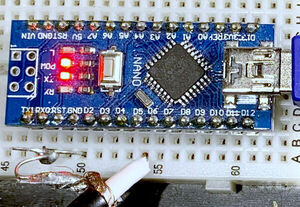
Arduino Nano frequency counter with atomic clock accuracy
"With this project you can measure a frequency from less than 1 Hz to about 6.4 MHz, with atomic clock accuracy (fclk_I_O / 2.5 according to the datasheet, which is 16 MHz / 2.5 = 6.4 MHz, but 7.5 MHz still works, but might miss some counts then sometimes). All you need for it is your computer, and an Arduino Nano, which you can get for less than five dollars at eBay. The idea is that the Arduino counts pulses, and then a program on your computer calculates the frequency. If your computer is synchronized to a NTP time server (this is standard nowadays for most operating systems), it has a very accurate time. The USB connection and operating system introduces some inaccuracies and latencies, but the longer the program runs, the more accurate the measurement gets. " [...]

Shutter Speed Tester for Film Cameras
"Build a simple shutter speed tester for film cameras. This is a project to build a simple shutter speed tester for film cameras. Classical film cameras have a mechanical shutter that doesn't require a battery. However, film camera shutters that have not been used for many years may not work properly. The Shutter Speed Tester checks if the shutter speed of the film camera is correct. The shutter Speed Tester uses Arduino as the main controller and the phototransistor as the light sensor to capture the light transmitted by the flashlight behind the camera body." [...]
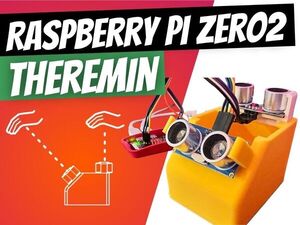
Raspberry Pi Theremin Midi Project
"Do you want to know how to build your own Theremin like instrument using 2 HC-SR04 range finders and a Raspberry Pi Zero 2? I was inspired by the Robot Xylophone by Liz Clark (of BlitzCityDIY). So I decided to create my own Theremin-like musical instrument. " [...]

Touchless Covid Free Electronic Dice Using Arduino
"Created a touchless Covid Free Electronic Dice using Arduino to play some board games with my son. My new project is an amazing way of giving our younger generation the taste of board games while staying COVID free. For this project we need: 1 x Push Button Switch 1 x Arduino Nano R3 (or ESP8266) 1 x 8x8 Led Matrix with MAX7219 IC 1 x Step Up Power Module [MT3608] 1 x IR Sensor 1 x AA Battery Holder and Batteries and Some Connecting Cables Using a Step Up Power Module connected to 2 x AA batteries I am powering up the Arduino Nano. In my logic, I am using an IR Module to send interrupts, which changes the face of the dice which is then displayed using a 8x8 LED Matrix. If you want to change the face of the dice by shaking it, you can use a tilt sensor to generate the interrupts. If you want to store the results in a database, you can use a ESP8266 board and send the result over WiFi and store it in a database." [...]

SS4H-RC Transmitter – DIY Project based on STM32
"A radio controller can have a thousand applications. Usually, it’s a control of some vehicle, drone, or robotic manipulator. There are already a lot of DIY solutions on the Internet. However, this controller is different. It’ll be the most comfortable RC Controller you’ve ever held. Because it will be perfectly suited to your unique hand Introduction This is the second part of this project." [...]

Plastic Scanner
"Plastic pollution is a well-known problem worldwide, and is still growing. It negatively affects humans and wildlife through animal death, groundwater pollution and incorporation of micro plastics in our digestive system. There are many initiatives focusing on reducing the negative effects of plastic pollution, but the amount of plastic consumed and the subsequent pollution is still increasing every year. Additionally, in the current COVID-19 pandemic the dependency on single-use plastics has increased exponentially. That is why it is important to keep improving recycling infrastructure, especially in low and middle-income countries. Their plastic waste management is often informal, and tools are insufficient for the correct management of plastic waste, resulting in plastic pollution.The research conducted in this thesis showed that especially t he sorting stage of the plastic recycling process is very time consuming and labor-intensive." [...]
Secção Videos
Videos interessantes.
That's all Folks!



